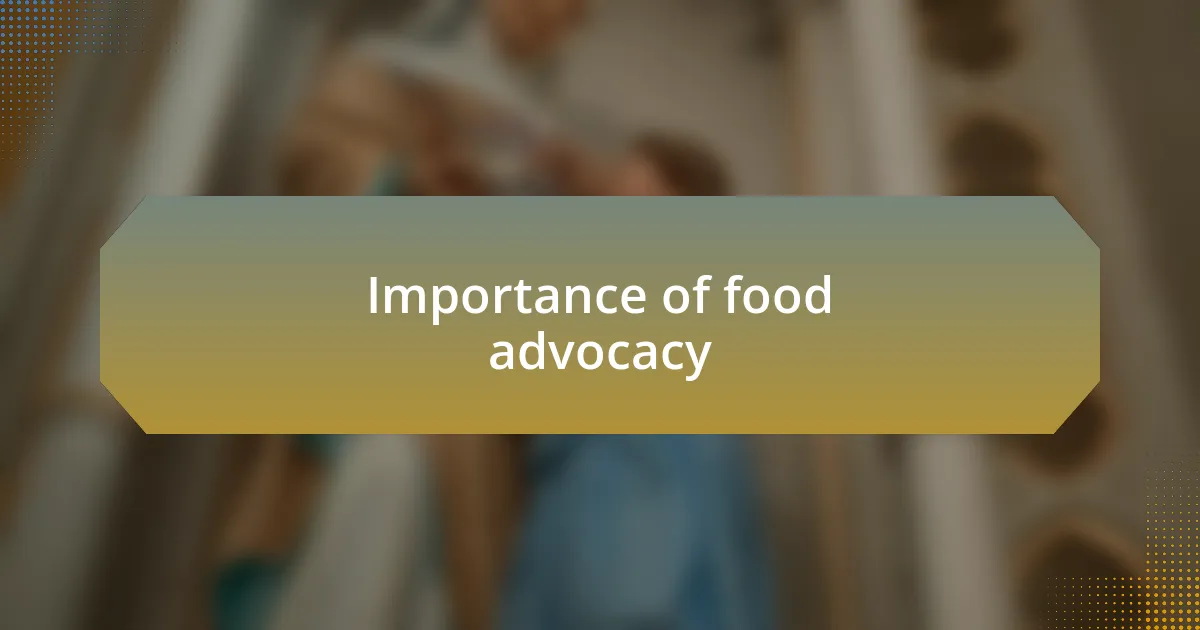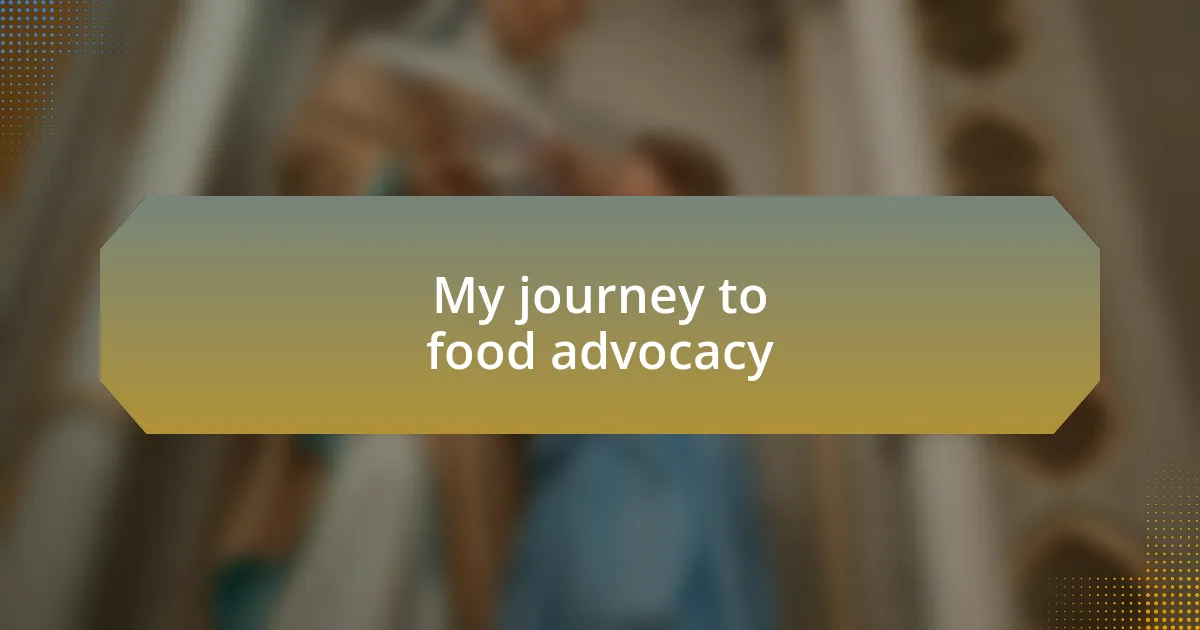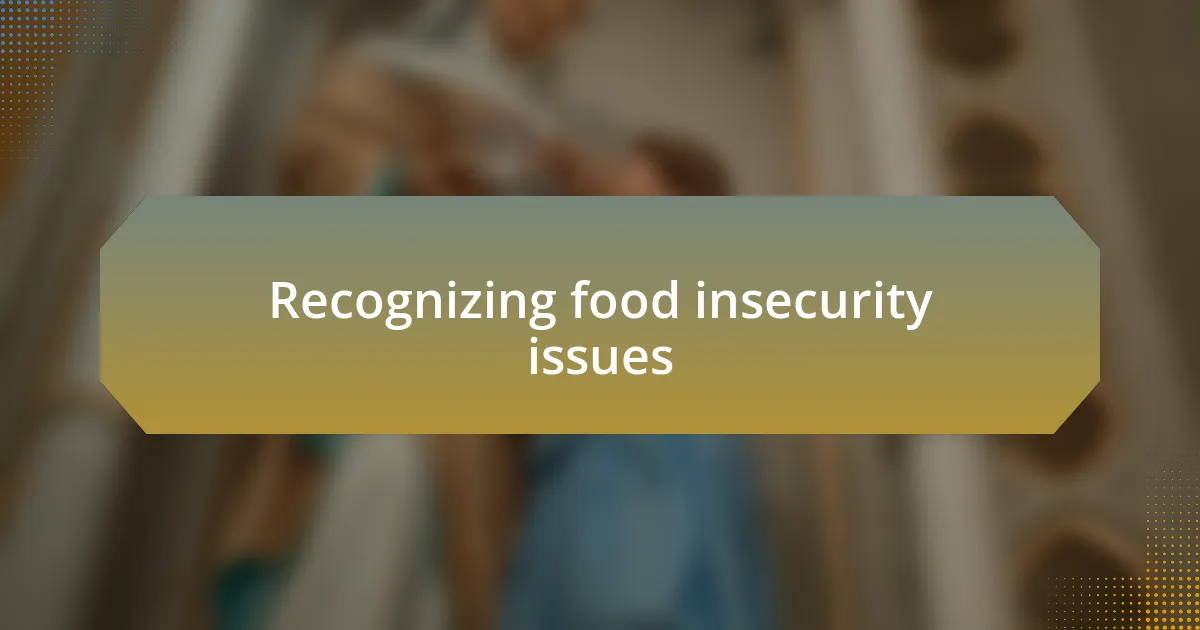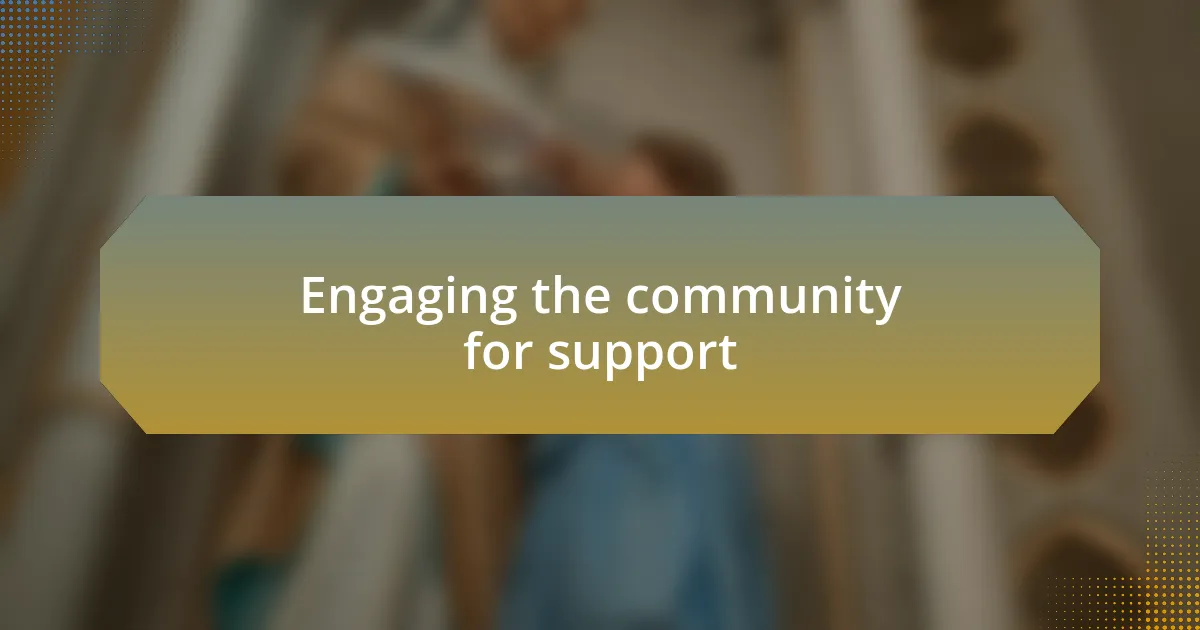Key takeaways:
- Homelessness is a multifaceted issue driven by economic, mental health, and systemic factors, and charity work can foster community connections and dignity.
- Food advocacy highlights the essential right to access nutritious meals, addressing broader issues like food deserts and encouraging community empowerment through education.
- Personal stories and collaboration with local organizations enhance the effectiveness of food advocacy, creating a sense of connection and shared purpose among community members.
- Successful initiatives, such as community gardens and “Pay What You Can” models, illustrate the transformative power of empathy and collective action in tackling food insecurity.

Understanding homelessness and charity
Homelessness is not just a lack of shelter; it’s a complex social issue that entails various factors, including economic hardship, mental health challenges, and systemic barriers. I remember my first encounter with someone experiencing homelessness. I was volunteering at a local charity and met a young man named David, who shared his story of job loss and the snowball effect that followed. How many of us could find ourselves in similar situations if circumstances were just a bit different?
Charity plays a crucial role in addressing homelessness by providing immediate relief and long-term support. When I participated in food drives, witnessing people form connections over shared meals opened my eyes to the power of community. It made me wonder, how often do we forget that those experiencing homelessness are part of our community, deserving of compassion and respect?
Engaging with the issue of homelessness through charity work has profoundly shifted my perspective. I found that it’s not merely about giving; it’s about understanding the dignity of every individual. When we help others, aren’t we also fostering a sense of unity and reminding ourselves that we are all interconnected in our human experience?

Importance of food advocacy
Food advocacy is essential because it addresses the fundamental right to access nutritious meals, particularly for vulnerable populations. I recall an afternoon at a community kitchen where I served meals. The joy on people’s faces when they received a hearty plate was a powerful reminder of how food can uplift spirits and foster connections. How can we underestimate the importance of nourishing not just the body, but also the soul?
The ripple effects of food advocacy extend far beyond hunger alleviation. I learned that advocating for food access often involves tackling larger issues like food deserts and inequitable food distribution systems. During a community meeting, I listened to a mother express her frustration over the lack of healthy options near her home. It struck me how deeply intertwined our food systems are with our overall health and wellbeing. Shouldn’t everyone have the same opportunities to provide their families with wholesome meals?
Moreover, food advocacy fosters community resilience and empowerment. I’ve seen small groups of advocates come together, not just to provide meals, but to educate their neighbors about nutrition and cooking. One vivid memory is of a cooking class where I shared simple recipes with participants who were eager to learn. This exchange highlighted that when we empower individuals with knowledge, we create a more self-sufficient and informed community. Isn’t that a goal worth striving for?

My journey to food advocacy
My journey into food advocacy truly began during a volunteer stint at a local food pantry. One day, I met a young woman named Sarah who shared her struggle to get enough nutrition for her two children. As she spoke, I felt a mix of empathy and urgency; how was it possible that in a world overflowing with resources, she felt so helpless? That encounter ignited something in me—a desire to not only serve meals but to change the system that allowed such inequalities to exist.
Soon after, I began attending workshops on food justice, where I learned about the structural barriers faced by low-income families. I vividly remember a workshop exercise where we mapped out a community’s access to grocery stores. The stark contrast in accessibility among different neighborhoods left me questioning: how can we accept this disparity as normal? This knowledge compelled me to advocate for better access to fresh food in underserved areas, as I realized that food is more than fuel; it is a vital component of dignity and respect.
I also found that storytelling is a powerful tool in food advocacy. I decided to create a blog where I shared my experiences, thoughts, and the stories of those I met along the way. Through candid conversations, I’ve learned that everyone has a personal relationship with food, filled with memories, culture, and emotion. Could sharing these narratives spark a movement? I can only hope to inspire others to join me in this vital fight for food equity and justice.

Recognizing food insecurity issues
Recognizing food insecurity issues often starts with seeing beyond the empty plates. I recall visiting a community in my city where the closest grocery store was over a mile away, and buses ran infrequently. It hit me hard; how could families manage to feed themselves when basic access to healthy options was such a struggle?
During one of my advocacy workshops, I met a man named David. He opened up about his experience relying on local food banks, describing how nutritious options were often scarce. Hearing his story made me question the basic assumption that everyone has equal access to food. It ignited my curiosity: What barriers exist that keep people like David from accessing nutritious food every day?
Food insecurity isn’t just about the lack of food; it’s about a web of challenges like transportation, finances, and awareness. As I delved deeper into research, I learned that food deserts—areas lacking convenient access to affordable and healthy food—disproportionately affect marginalized communities. Could it be that a simple walk to the grocery store isn’t so simple for many? Understanding these layers drives home the urgent need for advocacy in our society.

Strategies for effective food advocacy
One strategy I found effective in food advocacy is storytelling. When I share my personal journey about visiting food distribution centers, the vivid descriptions spark empathy. For instance, explaining how I witnessed a mother’s relief as she received fresh produce evokes a strong emotional response. How powerful is it when we connect through real-life experiences? Storytelling makes the issue tangible, drawing others into the conversation.
Another impactful approach is forming partnerships with local organizations. I remember collaborating with a local school that faced food shortages for its students. Together, we created a weekly meal program that not only fed children but also educated families about nutrition. When we unite forces, the outcomes can be transformative. I often ask myself: What more can we achieve if we combine our efforts with those on the ground?
Lastly, leveraging social media for awareness cannot be understated. I once launched a campaign showcasing everyday faces of food insecurity, and the response was overwhelming. People began sharing their stories, creating a ripple effect. Isn’t it remarkable how digital platforms can amplify voices that often go unheard? It’s a reminder that advocacy is a collective journey, and we can use our tools to reach a broader audience.

Engaging the community for support
Engaging the community for support requires heartfelt outreach that resonates on a personal level. When I organized a community potluck, I noticed how sharing a meal not only satisfied hunger but sparked conversations. Strangers became friends as they shared stories around the table, reminding me that food is a powerful connector. Isn’t it fascinating how a simple gathering can ignite a shared sense of purpose?
In my experience, inviting local businesses to play a role can be incredibly effective. One spring, a nearby café offered to donate meals for a weekend food drive. Their involvement didn’t just provide nourishment; it wove their business into the fabric of our community’s support network. I often reflect: how can we engage more local businesses to recognize the impact of their contributions?
Another method I’ve found helpful is hosting workshops that empower community members with knowledge. I remember leading a session on budgeting for healthy meals and watched as participants went from skeptics to enthusiastic cooks. The energy in the room was contagious, as we explored practical ways to combat food insecurity. Isn’t it empowering to see individuals take charge of their health and well-being?

Success stories in food advocacy
Many success stories in food advocacy highlight the impact of community-led initiatives. I recall a remarkable project where volunteers transformed a vacant lot into a community garden. This simple act not only provided fresh produce but also fostered a sense of ownership and pride among participants. Isn’t it incredible how cultivating food can cultivate relationships and create a vibrant community?
I once attended a local food bank event where they introduced a “Pay What You Can” model for meals. I watched as people from various backgrounds came together, sharing not just a meal, but also their stories of struggle and resilience. This model challenged the traditional perception of charity, merging dignity with support and ensuring that everyone felt valued. Hasn’t it shown us the importance of empathy in addressing food needs?
Another inspiring example was a collaboration with schools to create a “food rescue” program. One day, I joined students in collecting surplus food from their cafeteria to donate to families in need. The excitement on their faces was palpable as they learned the crucial connection between waste reduction and helping their neighbors. How rewarding is it to witness young advocates realizing their power to make a difference?